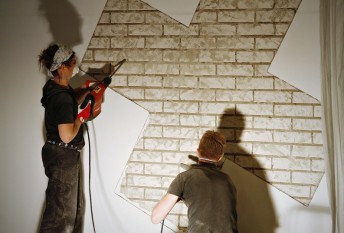About percent-for-art principle
At different stages of their development, architecture and visual art have absorbed influences from each other by incorporating a number of common starting points and messages into their modes of expression. As an example, we can take the striking influence of abstract visual art on contemporary art architecture. At best the outcome of this interplay between architecture and visual art has been an integrated work of art.
The built environment is a combination of mental and material resources. Various types of cultural event, public visual-art acquisitions and projects enliven the cityscape, affecting people’s sense of space and strengthening their feeling of community. People’s image of an area, city or place reflects their more general conception of it. Mental impressions can be based on an existing abstract or concrete factor. That concrete factor might, for example, be an architectonic edifice or a public artwork. The everyday living environment and, through that, urban planning and design, play a significant role in individual development and wellbeing.
The concepts of place, space and time, along with the inter-relationships between them form a fundamental part of public art. Site-specificness requires that the art be made for a single, selected spot, which has an effect on the meanings formed around it, or that it uses the place in question as its point of departure. Right from the acquisition phase, an effort is made to take into account where and how the work will be located in and occupy the space.
A natural future direction for developing and strengthening the percent-for-art principle could be regional-planning, land-use and town planning projects. The application of the percent-for-art principle in public art projects is one way of trying to meet the aim of the welfare society to create an enjoyable, stimulating living environment.

